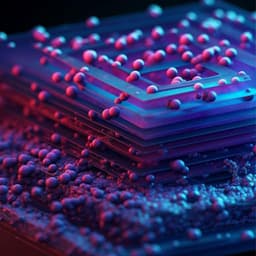
Engineering and Technology
Direct visualization of out-of-equilibrium structural transformations in atomically thin chalcogenides
P. Kumar, J. P. Horwath, et al.
Explore groundbreaking research by Pawan Kumar and colleagues, which visually captures the fascinating structural transformations in atomically thin transition metal dichalcogenides. Discover how different heating rates can lead to unexpectedly ordered crystalline structures or amorphous regions, unveiling new pathways for creating nano-scale materials.
Playback language: English
Related Publications
Explore these studies to deepen your understanding of the subject.







